Articles tagged with: polymer
WATER, WOOD »

Sometimes the beginning of the year is a little bit … well … boring. Everyone is working out at the gym and eating healthy green foods, and even though the sun still sets at an ungodly hour, all the festive holiday parties are over. This admirably disciplined January attitude is great for working off all the pfeffernüsse you shoved in your face and chased with rum-laced egg nog at your Aunt Betty’s house in December, but if you’re not careful all of this new-found rigidity and focus could negatively affect …
Uncategorized »
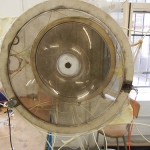
Last week I found myself in Zürich, Switzerland, which in itself is somewhat unusual for a person who typically lives and works in the great state of Texas. To add to that, while installed in said location I experienced one of those intensive periods of excitement and discovery that only happen when you toss yourself and an over-stuffed rolling suitcase headlong into a foreign country and participate in a workshop in order to learn how to screen print electroluminescent lamps (and also to learn that, although they are healthier, multigrain croissants are simply not as delicious as the …
EARTH, WOOD »
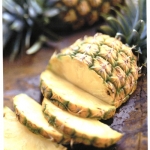
It’s always a shock to find out that something you thought you made up is actually (or at least mostly) true. Take the post I wrote for April Fool’s Day about a new plastic made from pulverized Tulip leaves: I thought that heating and then pulverizing plant fibers into a fine powder and suspending them in a polymer matrix to make a super-strong material was a crazy idea of my own making that sounded faintly feasible. As it turns out, Brazilian researchers at Sao Paulo State University are at this very moment working on a new plastic …
FIRE, WOOD »
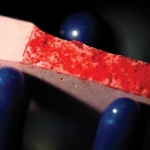
Stairs are challenging enough for adults at times, but I distinctly remember how hard it was to climb them when I was little. When you are small in stature, 7″ high risers hit at mid-thigh and most of the time you have to take each stair on all fours. Many of the epic, all-out “Alli versus the Stairs” battles ended with a small, defiant child celebrating wildly on the second floor, but sometimes things didn’t go my way. On the days that the straight run, open tread, carpeted monster was …
METAL »
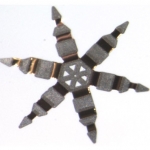
Generally speaking, architecture is kind of a big deal. What I mean is that architecture is large in size; it accomodates enormous objects like people, cars, eighteen-wheelers, and the occasional overfed cat. The Burj Khalifa in Dubai, for example, is 2,717 feet tall; that’s just over half a mile by my calculations. (I’ve seen entire hills shorter than the Burj Khalifa). But the thing about BIG things is that they tend to result from organized aggregation of small things. And so today I’d like to take a moment to explore the implications of the recent development of some really really ridiculously tiny …
WOOD »

If you’re anything like me, you don’t spend much time around children and probably find them slightly unnerving. I mean, think about how fast they’re growing. It’s completely freaky. Just consider this: if you measured a child’s foot when it was one year old and then you measured it again six years later, the second time you measured it, the foot would be a completely different size.
Image courtesy www.geekinspired.com
Feet grow, but shoes don’t. What this means, of course, is that children go through an enormous quantity of plastic rain boots as their feet get larger. And …
WOOD »
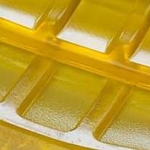
Materia’s excellent materials newsletter for May just hit my inbox (I’m not in any position to complain about the timing since I’ve been a delinquent blogger since April) and I learned about an intriguing material being produced in Dong Guan, China: PU Gel. It’s mostly used for sporting goods such as shoes, but it can also be used for bags, power tools and electronics cases, and on clothing. The manufacturer, Taiwan Kurim Enterprises, was founded in 1987 and has been molding PU gel and printing silicon ever since. The company …
FIRE, WOOD »

I read a statistic somewhere* that said that the biomass of all the ants on earth weighs more than the biomass of all the human beings on earth. I don’t know if that is true, but if it is that would mean there are a LOT of ants out there. I mean, if your average run-of-the-mill ant weighs 3 milligrams, and the average human (accounting for the “epidemic of obesity” in certain countries that shall remain nameless) weighs in at about 150 pounds or so, and there are billions of human beings on the planet … …
FIRE »
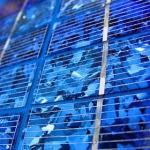
Silicon solar cells are popping up in lots of places these days – they’re powering traffic lights and security cameras, they’re clinging in neatly ordered arrays to rooftops, and they’ve even been spotted in all their sparkly blue splendor on the occasional backpack (where they are used to power mp3 players, fancy calculators, and cell phones).
Image credit www.devicedaily.com
Here’s how solar cells work at the most basic level: photons (units of light) hit the surface of the cells and the light energy is quickly absorbed by the semiconductor material. The incoming energy knocks electrons loose from the silicon, and when that …
FIRE, WOOD »
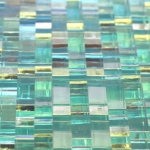
I assume you’re aquainted with acrylic already; perhaps the two of you met while model-making in the wee hours of the night during architecture school, or maybe you’re wearing acrylic nails. Could be you’re rocking an acrylic visor on your motorcycle helmet, or your exotic tropical fish collection swims in an acyrlic fish tank. You love it because it’s lightweight, transparent, has good impact strength, doesn’t break into lethal shards, doesn’t yellow, lasts for 30 years, and never forgets to call. But sometimes a person wants more than transparency. Sometimes a person wants …







